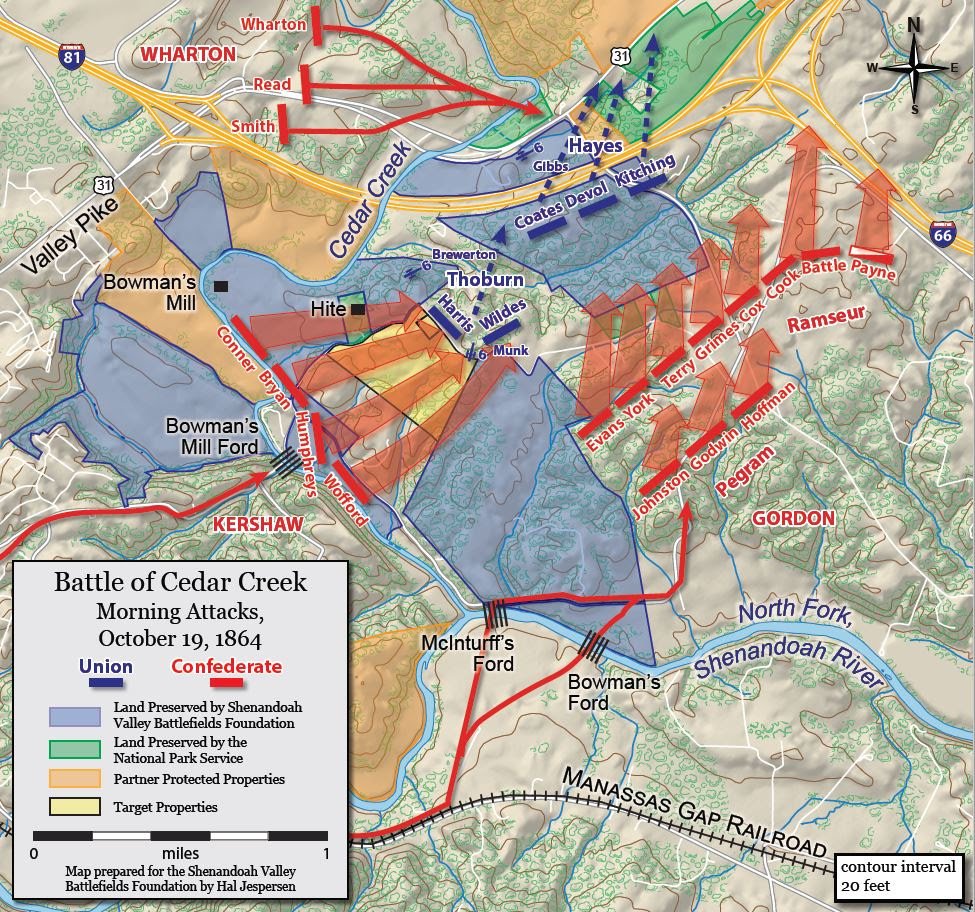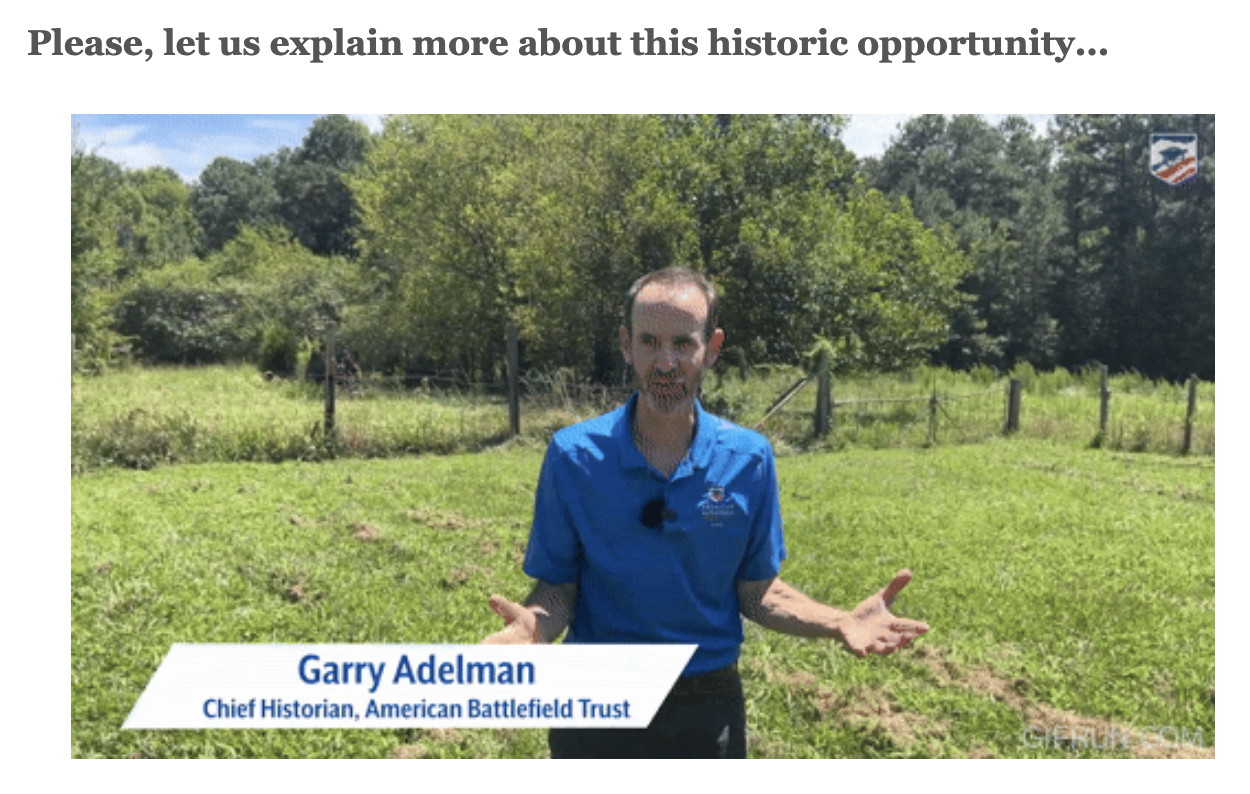It’s no secret that land on and near where the 1863 Battle of Chancellorsville raged in Virginia is often threatened by new developments, which is why I’m especially pleased today to tell you we’ve had a big win in the area. As a result of your help, we can now declare victory on nearly 44 acres of land at the Flank Attack of the Battle of Chancellorsville , including land associated with original Chancellor plantation and Dowdall’s Tavern.
When we began the fight to preserve these threatened acres, Historian Bob Krick said, “The survival, undeveloped, of a tract this large in this crucial location is nothing short of miraculous. Saving it will be a spectacular preservation coup.” Well, folks, we like to perform miracles. And, with your help, we have. Thank you!
Landmarks of Battle
The first tract is 42 acres in the heart of the Chancellorsville Battlefield. At the time of the war, the property was part of Wilderness Baptist Church pastor Reverend Melzi A. Chancellor’s plantation. The parcel we’ve saved likely includes the former site of Chancellor’s residence, known as Dowdall’s Tavern. During the 1863 clash, Dowdall’s Tavern was a prominent landmark and was used as headquarters by Maj. Gen. Oliver O. Howard, commander of the Union XI Corps. Union regiments and batteries under the command of Col. Adolphus Buschbeck were positioned in entrenchments on the southern edge of the property, facing south. When Lt. Gen. Thomas “Stonewall” Jackson launched his massive flank attack from the west on May 2, the XI Corps was not in position to confront the Confederate assault and its forces were rapidly rolled up and forced into full retreat down the Plank Road to the Chancellorsville intersection three miles east. A granite monument commemorating the 154th New York Infantry Regiment , which was one of the units driven from the property by Jackson’s attack, stands here.
154th New York Regimental Monument (Fredericksburg and Spotsylvania National Military Park)
The Union retreat also crossed over the nearly two additional acres of now preserved land located just east of the historic Dowdall’s Tavern property and farm. The land here, which was heavily wooded at the time of the battle, was behind the Confederate lines and these acres we have now saved likely served as a staging area for renewed Confederate attacks throughout May 3.
VIDEO: Watch an overview of what happened at Dowdall’s Tavern and why it matters.
In the wake of the XI Corps’ rout, Dowdall’s Tavern became a field hospital for wounded Union soldiers, who were by that time prisoners behind Confederate lines. Surgeon George Suckley, medical director of the XI Corps, remained at Dowdall’s Tavern and oversaw the care of an estimated 1,100 Union wounded.
USCT History
A year after Chancellorsville, On May 7, 1864, Brig. Gen. Edward Ferrero and his men of the United States Colored Troops (USCT), many of them formerly enslaved men themselves, camped on the tract following the Battle of the Wilderness. Ferrero temporarily established his headquarters at Dowdall’s Tavern. Elements of the division remained on and around the land for over a week. Some of these very regiments participated in the Battle of the Crater at Petersburg.
Preserving these acres is a special victory as they help us tell a fuller story of the Civil War in Virginia. We can’t thank you enough for helping us do so!
‘Til the battle is won,
David N. Duncan
President
American Battlefield Trust
P.S. We’re not done fighting to preserve Chancellorsville. New threats, including a proposed gas station near the ruins of the iconic Chancellor House, are looming. Find out how you can help us preserve the heart of the Chancellorsville Battlefield.




























